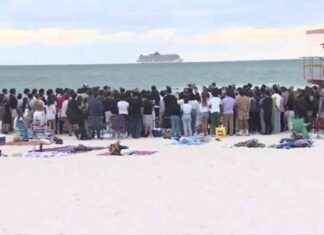CANBERRA (Australia aEUR”) More than 90% of Great Barrier Reef coral was bleached this year in the fourth mass event in seven decades in the largest coral reef ecosystem in the world, Australian government scientists stated.
Global warming is responsible for bleaching, but this is the first bleaching event in a La NiA+-a weather system that is associated with cooler Pacific Ocean temperatures. The Great Barrier Reef Marine Authority released its annual report late Tuesday, which found that 91% of the affected areas were affected.
Two-thirds of corals in the famous reef off Australia’s east coast were damaged by bleaching in 2016 and 2017.
According to David Wachenfeld (chief scientist at the authority that manages the reef ecosystem), coral bleaches due to heat stress. Scientists hope most coral will recover from this event.
Wachenfeld stated Wednesday that “the early indications are suggesting that the mortality won’t be very high.”
Wachenfeld said, “We hope that most of the coral bleached will recover and that we will end up having an event rather like 2020, when there was mass bleaching but low mortality.”
Wachenfeld stated that coral mortality was high after the bleaching events of 2016 and 2017.
The hottest December since 1900 was last December. It was the first month of Southern Hemisphere Summer. According to the report, a “marine heatwave” had begun by February’s end.
In March, a United Nations delegation visited the reef to determine if the World Heritage listing of the reef should be reduced due to climate change.
Australia received enough international support in July to delay an attempt by UNESCO to lower the reef’s World Heritage status from “in danger” due to climate change damage.
The question will be re-addressed at the World Heritage Committee’s annual meeting next month.







